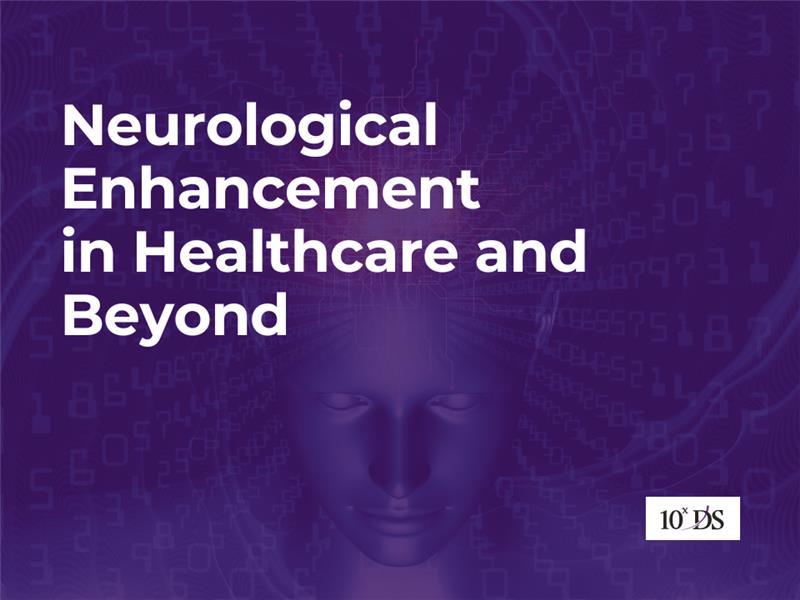
Neurological Enhancement in Healthcare and Beyond
In the age of accelerating technology, the human brain—the most complex organ in the body—is being reshaped not only through medicine but through powerful innovations in neuroscience and engineering. Neurological enhancement, once the realm of science fiction, is now a developing reality with transformative implications in healthcare, education, productivity, and even ethics. From treating neurodegenerative disorders to boosting memory and focus in healthy individuals, the field is poised to redefine what it means to be human.
This blog explores the various dimensions of neurological enhancement, its current and potential applications, the ethical landscape, and how it may shape the future of healthcare and society at large.
What is Neurological Enhancement?
Neurological enhancement refers to the use of medical, technological, or biochemical interventions to improve cognitive, emotional, or motor functions beyond the normal baseline. While the primary goal in clinical contexts has been restoration (e.g., treating Parkinson’s disease, epilepsy, or depression), the same technologies are increasingly being applied to amplify abilities in healthy individuals.
Enhancements can be categorized into:
- Pharmacological: Use of nootropics or drugs to enhance memory, attention, or mood.
- Neurotechnological: Devices such as brain-computer interfaces (BCIs), neurostimulation, and neural implants.
- Behavioral and training-based: Cognitive training, neurofeedback, and mindfulness practices augmented by tech.
Neurological Enhancement in Healthcare
1. Restorative Therapies
Restorative enhancement is perhaps the most ethically accepted and widely practiced use of neurotechnology today. It includes:
a. Deep Brain Stimulation (DBS)
DBS involves implanting electrodes in specific brain regions to modulate abnormal activity. It’s used to treat Parkinson’s disease, dystonia, and treatment-resistant depression. DBS has been life-changing for many, restoring motor control and reducing symptoms where drugs have failed.
b. Brain-Computer Interfaces (BCIs)
Initially developed to aid patients with paralysis or locked-in syndrome, BCIs allow users to control external devices using brain signals. Companies like Neuralink aim to restore sensory and motor function and even provide communication pathways for people with severe neurological impairments.
c. Neurostimulation for Mental Health
Transcranial magnetic stimulation (TMS) and transcranial direct current stimulation (tDCS) are non-invasive methods used to treat depression, anxiety, and chronic pain. These techniques are expanding as alternatives to medication, offering fewer side effects and personalized therapies.
2. Predictive and Preventative Neuroscience
AI-powered brain imaging and genetic screening are being used to predict susceptibility to neurological diseases such as Alzheimer’s or schizophrenia. Early detection can lead to preventive interventions that delay or mitigate disease onset, representing a major shift from reactive to proactive care.
Beyond Healthcare: The New Frontier
While the healthcare applications are compelling, neurological enhancement is expanding into everyday life in unprecedented ways.
1. Cognitive Performance in Healthy Individuals
Nootropics like modafinil, caffeine derivatives, and racetams are used to boost focus, memory, and alertness. In academic and corporate settings, the pressure to perform has led to increasing off-label use of such drugs—raising questions about fairness, consent, and long-term safety.
TMS and tDCS are also being explored as cognitive boosters in healthy brains. Studies suggest temporary improvements in problem-solving, attention, and language learning—although results remain inconsistent and the long-term effects are largely unknown.
2. Military and Defense Applications
Defense agencies have long been interested in neuroenhancement to improve soldier resilience, decision-making, and situational awareness. DARPA has funded projects exploring memory enhancement, brain-controlled drones, and fatigue resistance. While these applications promise tactical advantages, they also pose profound ethical dilemmas regarding coercion and safety.
3. Workplace and Productivity
Neurofeedback and EEG headbands are being marketed to enhance focus and reduce stress among knowledge workers. Companies are integrating biometric feedback into corporate wellness programs, and the future may see employees optimizing brain states to match specific tasks—e.g., creativity vs. analytical work.
4. Health, Safety, and Environmental (HSE) Applications
Neurotechnologies like neurofeedback and brain stimulation are increasingly being explored to enhance safety in high-risk environments. In industries such as construction, manufacturing, and transportation, these tools can help workers maintain focus, reduce fatigue, and improve decision-making in critical situations. By optimizing cognitive states, companies can potentially lower accident rates, enhance compliance with safety protocols, and improve overall worker well-being. As HSE teams integrate these technologies, they may also provide real-time data to monitor cognitive performance, helping to identify risks before they lead to accidents.
The Ethics of Enhancing the Mind
Neurological enhancement is not just a scientific or medical issue—it’s a profound ethical frontier.
1. Fairness and Accessibility
If only the wealthy can afford cognitive enhancements, we risk deepening social inequalities. A brain-boosted elite could widen the performance gap, creating a new form of neurodiversity with associated discrimination.
2. Consent and Autonomy
For vulnerable populations—such as children, the elderly, or military personnel—ensuring informed consent is challenging. Are users fully aware of the risks and long-term consequences?
3. Authenticity and Identity
Enhancement can provoke existential questions: If a memory or mood is artificially induced, is it truly “yours”? When we enhance cognition or emotion, are we changing who we are at a fundamental level?
4. Regulation and Oversight
Currently, the regulatory landscape is fragmented. Cognitive enhancers sold as supplements often bypass FDA scrutiny. Devices and techniques vary in oversight, leading to concerns about safety and misuse.
Future Outlook
While neurological enhancement is still in its early stages, the pace of innovation is set to accelerate dramatically due to breakthroughs in artificial intelligence, bioengineering, and nanotechnology. One of the most promising developments is personalized neuroenhancement—an approach that combines genomics, advanced neuroimaging, and wearable technology to create highly individualized cognitive enhancement protocols. These could optimize brain function based on a person’s unique neural profile, tailoring interventions for improved learning, memory retention, emotional regulation, or decision-making speed. Simultaneously, the rise of hybrid human-machine intelligence is redefining how we think about cognition. As brain-computer interfaces (BCIs) evolve, individuals may begin to offload certain cognitive functions to machines, creating seamless interaction between human thought and digital processing. Neural lace technologies, for instance, could enable direct access to cloud-based information, real-time memory retrieval, or even telepathic-style communication, blurring the boundaries between brain and device in ways previously unimaginable.
However, these advancements raise important ethical, legal, and social questions that must be addressed. Governments and international organizations will need to establish robust frameworks to regulate consent, privacy, and the use of enhancement technologies—especially for minors and vulnerable populations. Some countries are already taking proactive steps; for example, Chile has introduced groundbreaking legislation on “neurorights” to safeguard individuals against mental manipulation and unauthorized access to neural data. Still, one of the biggest challenges will be ensuring that neurological enhancement does not become a privilege reserved only for the wealthy. If access remains limited, society could witness the emergence of a “neuro-class” divide, where enhanced individuals gain disproportionate advantages in education, employment, and influence. To prevent this, public investment in accessible enhancement technologies and neuro-literacy will be crucial. Whether neurological enhancement becomes a tool for collective empowerment or a driver of inequality will depend on the choices we make today.
Conclusion
Neurological enhancement represents one of the most promising and provocative areas of 21st-century innovation. While its roots lie in medicine and restoration, its branches reach far into education, defense, productivity, and human identity itself. As science pushes forward, society must follow with thoughtful debate, ethical safeguards, and inclusive policies.
We stand on the edge of a new cognitive era—one where brains may be optimized as easily as smartphones, and where the limits of the human mind are continually redrawn. Whether this becomes a force for universal uplift or deep division depends on how wisely and equitably we navigate this evolving landscape.


